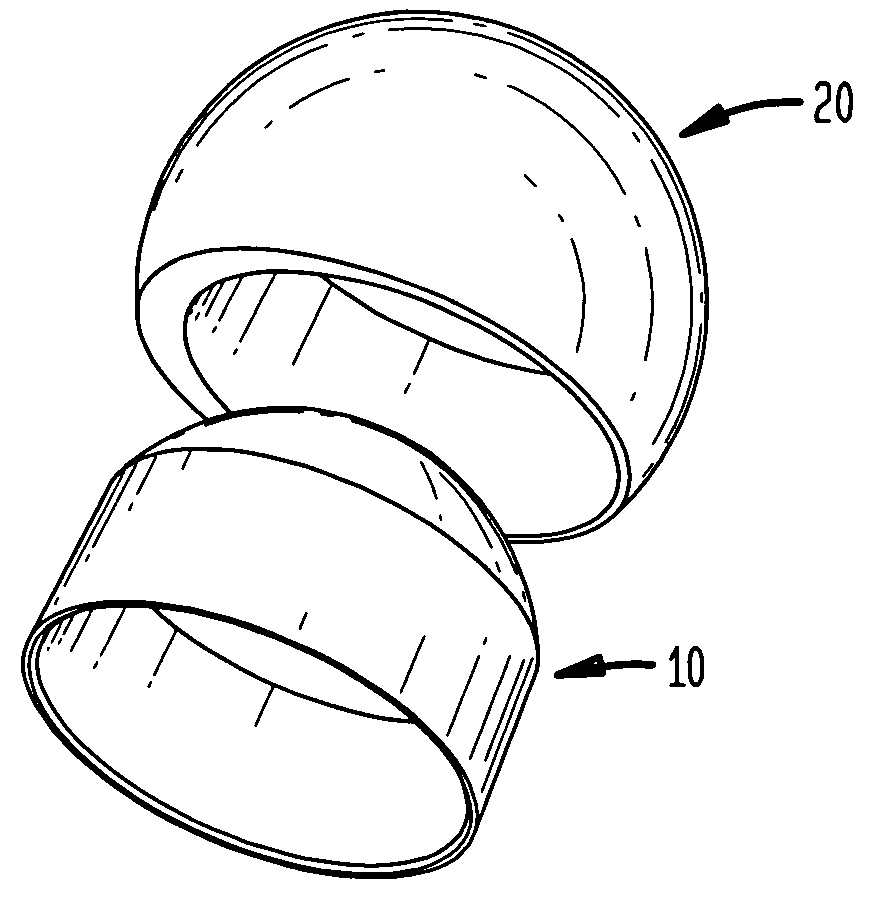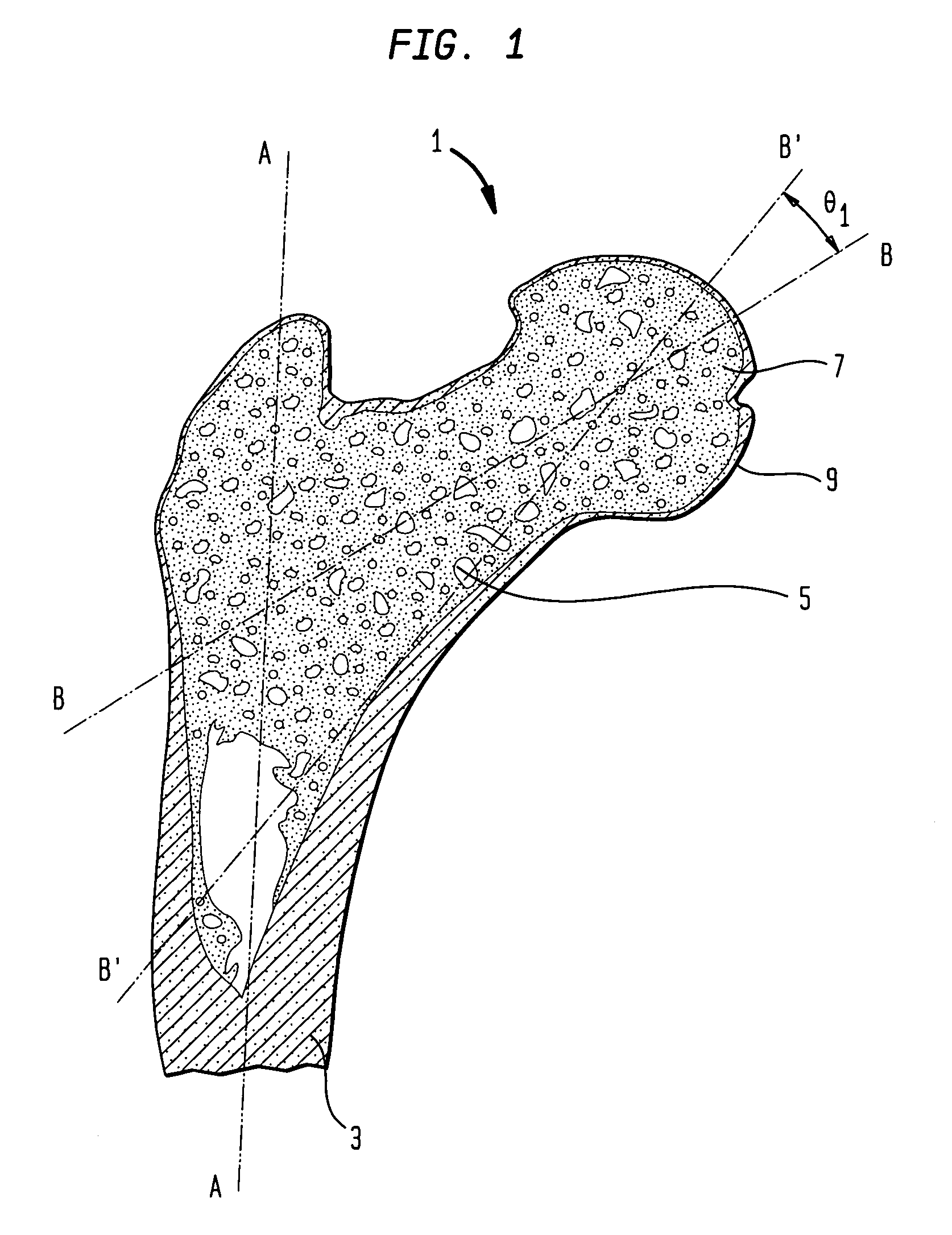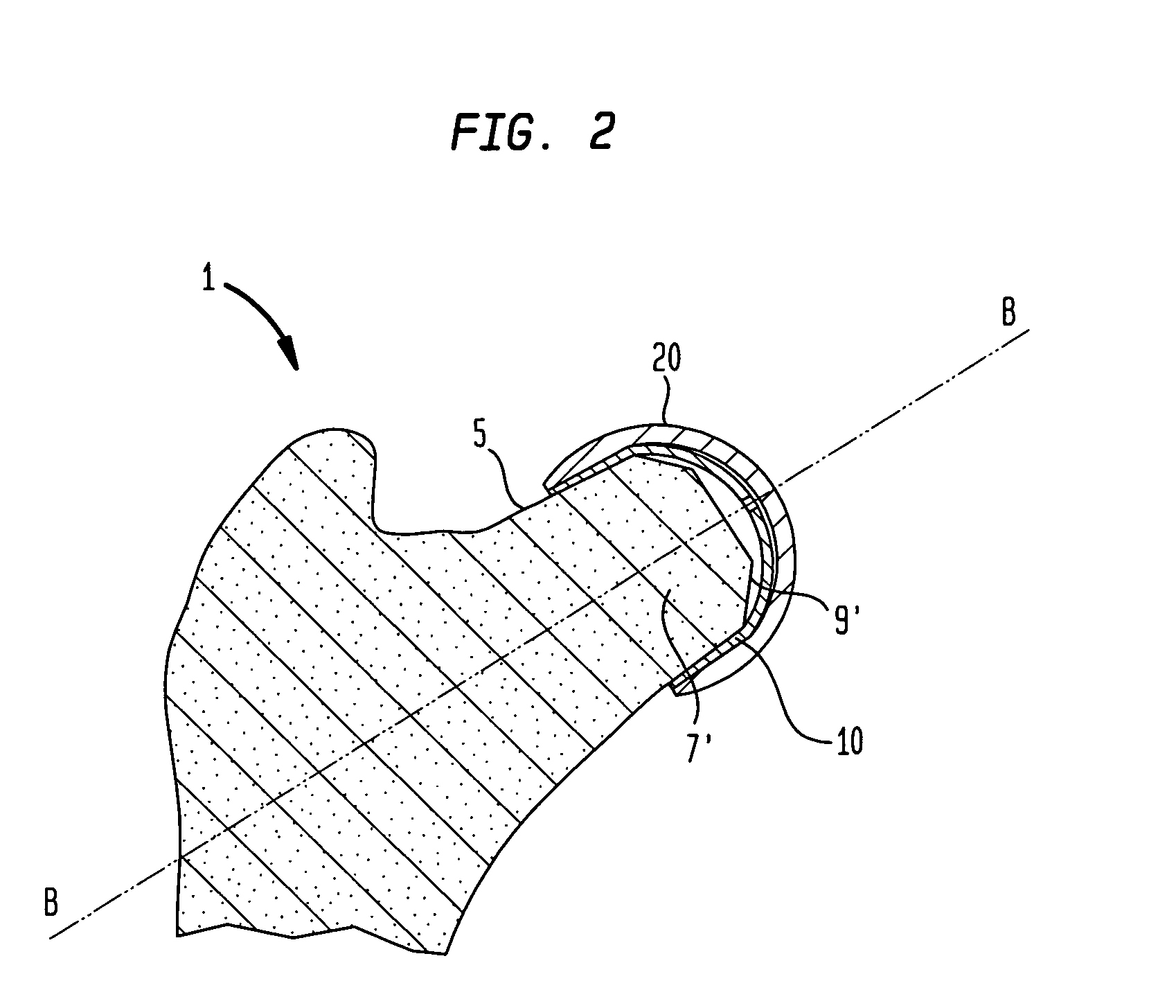Femoral head resurfacing
a femoral head and resurfacing technology, applied in the field of femoral head resurfacing, can solve the problems of adversely affecting the goal of satisfactorily restoring, affecting the performance of these implants, and affecting the fixation of components, etc., to achieve the effect of surface replacemen
- Summary
- Abstract
- Description
- Claims
- Application Information
AI Technical Summary
Benefits of technology
Problems solved by technology
Method used
Image
Examples
Embodiment Construction
[0040]As shown in FIG. 2, a proximal femur as depicted in FIG. 1 has been surgically prepared for the implantation of a femoral hip resurfacing prosthesis. The preparation consists of a re-shaping of the femoral head 7, in this instance, as a surface of revolution about the femoral neck axis B-B. The femoral head 7 has been re-shaped by known surgical techniques as a prepared femoral head 7′, such that the femoral head surface 9 has been removed, creating a prepared femoral head surface 9′. Arranged in close contact with the prepared femoral head surface 9′, is a sleeve 10. In turn, a ball component 20 is fitted over the sleeve 10. In this manner, a modular prosthesis comprising the sleeve and ball is emplaced on the prepared femoral head with various embodiments and advantages as will be further described.
[0041]FIG. 3 depicts a top view of the prosthesis of FIG. 2 fitted on a prepared femoral head. The projection of the femoral shaft axis A-A, depicted in FIG. 1, is shown on the up...
PUM
| Property | Measurement | Unit |
|---|---|---|
| porosity | aaaaa | aaaaa |
| porosity | aaaaa | aaaaa |
| diameters | aaaaa | aaaaa |
Abstract
Description
Claims
Application Information
 Login to View More
Login to View More - R&D
- Intellectual Property
- Life Sciences
- Materials
- Tech Scout
- Unparalleled Data Quality
- Higher Quality Content
- 60% Fewer Hallucinations
Browse by: Latest US Patents, China's latest patents, Technical Efficacy Thesaurus, Application Domain, Technology Topic, Popular Technical Reports.
© 2025 PatSnap. All rights reserved.Legal|Privacy policy|Modern Slavery Act Transparency Statement|Sitemap|About US| Contact US: help@patsnap.com



